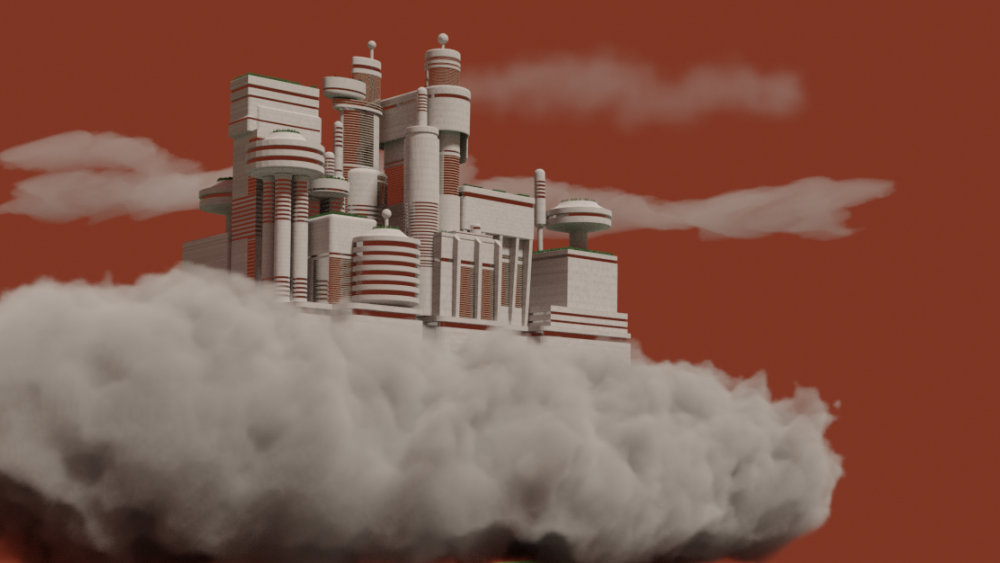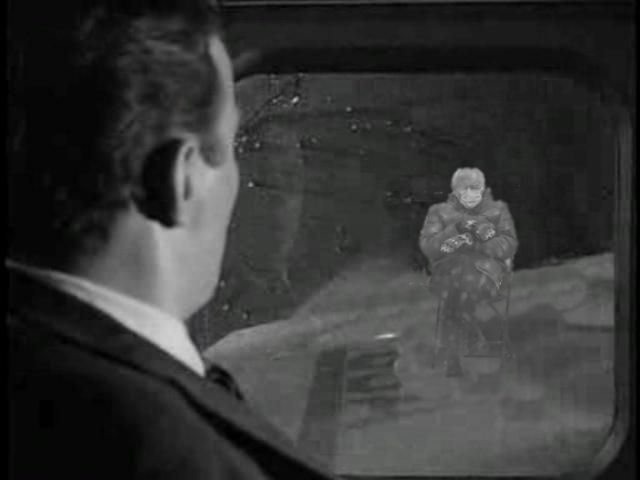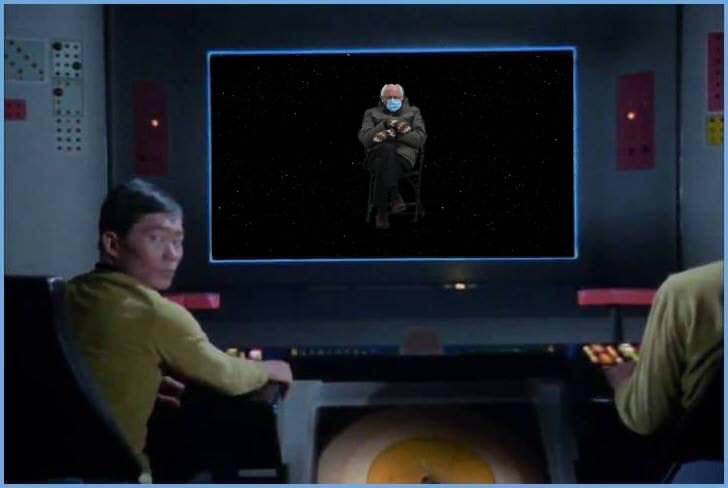-
Posts
2197 -
Joined
-
Last visited
-
Days Won
44
Content Type
Profiles
Forums
Events
Everything posted by Janus
-
That was the argument put forth by Galileo against the Aristotelian model of gravity that posited that heavier objects fell faster than lighter ones. It was not meant an argument against gravity itself, but against that particular model. He wasn't saying that gravity didn't exist, but that it didn't behave like Aristotle said it did. The model for gravity that replaced the old one didn't suffer from this feature.
-

Proof – Mars Orbited close to Earth 1350 BC
Janus replied to AlexandrKushnirtshuk's topic in Speculations
Of course no mention of the fact that if Mars had been at geostationary orbit distance from the Earth it would have pulled all the Earth's oceans into 6 km high tidal bulges. -
Growing up, we had a Siamese cat which had quite a reputation (It once chased a dog several times it size off our property.) Some people got to the point, that when they came over the first thing they would do was look around nervously and ask "Where's the cat"? And we had to warn people that if the cat came around don't reach down to pet her or your likely to pull your hand back bloodied. Now he wasn't that way with anyone in our household. (There were times when the cat would get under Mom's feet in the kitchen and she'd just pick her up with one hand and toss her out, and cat did nothing.) AND, she was not that way around children. Kids could get away with anything, and while she might eventually go off and hide, she never once even hissed at them. It's like she knew that they were young, didn't know any better and deserved leeway.
-
Right after I retired, I started taking morning walks for the exercise. My wife usually would join me, but a few weeks in she tweaked her back and couldn't, so I took my walks solo for a while. We had a cat at the time. Every day, when I got back from my morning walk, he come running, meowing, jump up onto the back of the sofa (which was near the front door), And wait for me to put my head down so he could give me a head bump. Then he'd jump down and go about his business. He'd already been fed, and my wife always fed him anyway, and It wasn't as if he had been lonely, as she had been home with him all morning, he just wanted to greet me when I came home. Like others here, I've had both dogs and cats as pets over my lifetime, and understand the pluses and minuses of both.
-
My paternal Grandfather was 6 when the Civil war started (Born in Dec of 1854), though he didn't come to the US until 1883.
-

Synchronizing clocks in different frames of reference.
Janus replied to geordief's topic in Relativity
You could set things up so that, from a given frame, the clocks started and ended "in sync", but this would require artificially adjusting the tick rate of the clocks. Thus you could get this as measured from the rest frame of the lower row of clocks. All the clocks in both rows remain in sync. However, when you transition to the rest frame of the upper row of clocks, you get this: The only moment when any two clocks read the same is when they are passing each other. -
Just after Thanksgiving, I finally updated my 7+ year old computer to a new "gaming"* computer. This has allowed me to upgrade Blender to the latest build, which has a number of new features and tools, as well as driving the render times down significantly. For example. One of the Star Trek matte paintings I tried to duplicate with Blender was of Stratos, the cloud city. While modeling the buildings wasn't that difficult, the clouds became problematic. In order to get the right look, you had to create a light scattering volume. This means that the render engine has to take into account how light behaves as it passes through the whole volume of the cloud. With my old computer, this meant hrs and hrs of render time, during which time I couldn't use the computer for anything else. I kept putting it off, thinking I would set the render going while we were away from home. Then Covid hit, and we weren't going anywhere. With the new computer, I decided to start the whole project again from scratch. (Mainly because the new version of Blender had a different model for making clouds) This is the result: In contrast to my old system, this render only took a few minutes. * Not that I do much in the way of gaming. It is is just that best the specifications for running Blender (good GPU etc.) tend to match those used for gaming. Though my daughter and her boyfriend did get me the newest Microsoft Flight Sim for Christmas.)
-
There is a formula for this, it is the same one used to find synodic periods for planets etc. (for example, how long it takes between Earth and Mars passing each other as they orbit the Sun.) The formula is T = 1/(1/p1-1/p2) Where p1 id the time it takes for one plane to complete is orbit and p2 is the time for the other planet to complete is orbit. In this case we are not given times, so we will simply give B a complete circuit walking time of 1 time unit and thus A has a complete circuit walking time of 1/2 time unit. Thus for when they are walking in the same direction T = 1/(1/(1/2)-1/1) - 1/(2-1) =1 Meaning that A passes B every time B has completed a complete circuit. This works out to 5 times if you count the last time they meet up again at the end of the walk (4 if you don't. For when they walk opposite of each other you make one of the times negative, giving T=1/(1/(1/2)-1/(-1)) = 1(2+1) =1/3 A and B meet when B has completed each 1/3 of his complete loop, and since B makes 5 complete loops, they meet 15 times if you count the last meeting ( 14 if not). So Give Jon O'Starr a star.
-
As swansot has already mentioned, it isn't quite that simple. There will be a gradient. Not only that, but there is the fact that the air in your ship will already be under pressure. If it is at 1 atm, this pressure is the same as caused by the weight of a column of air at constant sea level density which is 8.5 km tall.( at 1 g of gravity). So let's say your spaceship is 10 meters long and full of air at 1 atm. If you were to accelerate at 850 g, that air would be "pushed back" towards the rear of the ship. That 10 m column at 850g would act like a 8.5 km tall column at 1g. The air pressure at the rear of the ship will double. (but not increase by 100's of times.) The pressure would decrease as you moved towards the nose of the craft, but in this scenario would not decrease to zero. And of course, this would only occur during the acceleration phase So, if the ship accelerates up to 10,000 mph, that is the same as 4444 meters/sec. 850g is 8330 m/s/s, so it would take just a bit over 1/2 sec for your ship to go from 0 to 10000 mph at that acceleration. It would be during this time that the air would be compressed towards the back of the ship. Once the ship attains it's target velocity and stops acceleration, it will return to its previous uncompressed state. And while the air would start to compress towards the back the instant the ship begins acceleration, there would be some lag before it could come to its new state, and then some lag before it can return to its previous state once the acceleration ceases.
-
Reminds me of the time when I was a kid in Northern Minn. My Dad was driving to work in the early AM. He began to feel cold, even though the car heater was going full blast, and was starting to wonder what had gone wrong with it, when the weather report came over the radio announcing that the present temperature in the small town he was passing through at the time was -50° F
-
Maybe we should check between the sofa cushions.
-
It's the second case. Elements that aren't stable, but relatively more stable than you would expect for such a heavy element.
-
On the same topic: A reporter in a recent press conference asked whether Biden would hang a portrait of Trump in the White House ( something Trump refused to do for Obama) and along the same lines would he be inviting Obama to ceremony to finally hang his portrait. The answer was that no portraits hangings had been scheduled yet. But it struck me as a bit of a silly question. With everything on his plate right now, I doubt that Biden is giving much thought (or should be) to such purely ceremonial things.
-
On the other hand, there are a number of past members of former Republican administrations that have begun to discuss forming an Anti-Trump party over their dissatisfaction over how the present Republican establishment have been too subservient to Trump. The party could be bleeding voters from both ends.
-
I would put into consideration a different contribution made by Hubble prior to his Law. In 1924 he discovered Cepheid variable stars in Andromeda, which he was able to use to show that Andromeda was far outside our own galaxy, and not a part of it. While there had been debate about this., his observations were the first to provide exidence that the cosmos was much more vast than previously suspected and extended well beyond the Milky way.
-
Just to build on what has already been said. "Everything" is not moving away from each other. The atoms making up the Earth aren't, The planets are not moving away from the Sun (or at least not due to reasons tied to universal expansion), the stars in the galaxy aren't flying apart... All these structures are held together by interactions that are much stronger than universal expansion.* Our galaxy, along with Andromeda and a few others are part of a local group bound together by mutual gravitation. Our local group is one of many in a larger cluster. You have to go to scales beyond that for expansion to take hold. So when we say that the expansion of the universe is causing galaxies to move apart, what is really is that the larger bound clusters are moving apart from each other. * One way of imagining this is to think of yourself as standing on a polished tiled floor in you stocking feet. The tiles are expanding so that the center of the tiles move apart. But the bottoms of your feet, being held together by molecular force, don't expand along with them. If you have a friend on an adjacent tile he, would, over time, move further and further away from you as the floor expands. Unless: You reach out and grasp hands. Now, as long as your grip is stronger than the friction between your feet and the floor, you will stay the same distance apart. Gravity acts like your grasped hands. The difference is that gravity gets weaker over distance. So, as long as galaxies are close enough to each other, gravity can keep them bound together, but when they are further part, it can't.
-
The M&M experiment assumed that light's speed was fixed at c relative to the aether. It was an attempt to measure the Earth's motion with respect to the aether. (the aether would be the standard by which "stationary" would be defined. Now it was possible that, due to other various motions, the Earth, at a given moment, could be stationary with respect to the aether. However, that could only happen at one particular point of Earth's orbit. Do the experiment again 6 mo. later, and the Earth's motion with respect to the aether would have to be in the order of 60 km/sec. If there was an aether that light traveled at c with respect to, the experiment should have have been able to measure some motion of the Earth with respect to it simply by doing the experiment at different times of the year.
-

Matter travelling faster than speed of light
Janus replied to Ayden's topic in Astronomy and Cosmology
Assume the object passes at a distance of 1 light sec from you. When is is at a point just a bit shy of being even with you light leaves it, and takes just a bit over 1 sec to reach you Eye. A moment later, it is the same distance past the point of being even with you. The distance between it and you is the same distance as it was during the previous moment, So the light leaving it at this moment takes the same amount of time to reach you. Since the propagation delay is equal in both positions, time time difference between you seeing the object at each position is equal to the time it took to move between the two positions. You can measure the angle between these two sightings, and knowing the closest approach distance (1 light sec), you can work out how far the object moved in that amount of time. There would also be a "double image" effect. For example, assume the object again passes at a minimum distance of 1 light sec from you. But this time it starts at a point 1 light sec from the point of closest approach and is moving at ~ 2.415c. The light leaving it at that moment takes ~ 1.414 sec to reach you. In 0.414 sec at 2.414c, the object will reach the closet approach point, and the light leaving it then arrive at your eye 1 sec later, or 1.414 sec after it was 1 light sec from this point. In other words, the light that left it when it was 1 light sec short of closest approach, and the light light that leaves it at closest approach both reach your eye at the same moment. -

Matter travelling faster than speed of light
Janus replied to Ayden's topic in Astronomy and Cosmology
What makes you think this? The fact that the object itself is traveling faster than c would not prevent us from seeing it. Imagine that it is passing by you at a right angle to your line of sight. Some of the light emitted by the object just before it is even with you is emitted at nearly a right angle to its path and reaches you. as light travels at c(relative to you) no matter what the speed of the object that emits it. Some the light emitted by the object just after it passes you is also emitted at an angle so that it reaches you. Basically this means that as it passes you, you will still see it move across your line of sight. By using its distance from you, and the speed it appears to cross your line of vision, you would be able to work out that it is moving greater than c with respect to you. -
If dark matter was an effect caused by visible matter like stars and planets etc. , then its effects would follow a pattern that reflects that. Galaxies would act as if they had extra mass, but that extra mass would be concentrated where we see stars, etc. However, what we see is that galaxies behave as if most of the mass is located in regions where we see mostly nothing. (Such as the areas above and below the visible disks of spiral galaxies.) So it the distribution of the extra gravitational effect and not just an increased magnitude. In addition, we have seen examples where the gravitational effect attributed to dark matter has been dislodged from its parent galaxy cluster by a collision between two such clusters. Again if dark matter was just an additional effect caused by the stars, etc by themselves, you wouldn't be able to " knock it loose" from those stars. We also have found galaxies that are nearly identical in all other respects, but one behaves like it has dark matter, while the other behaves like it has little to no dark matter. If dark matter was an effect caused by the stars in the galaxy, then two identical looking galaxies would behave exactly alike.
-
How far the Oregon Republican party has fallen from the days of the likes of Tom McCall and Mark Hatfield.
-
-
I was also wondering if he meant a Wheatstone bridge, which uses a similar arrangement with resistors. And yes, rheostats are old-school, and energy wasters ( they also don't play well with compact florescent lights, which is why if you had an home with the old rheostat type light-dimmer switches, you wouldn't want to use CFLs with them). Some of the newer dimmer circuits use SCRs ( Silicon Controlled Rectifiers) circuits, which use duty cycle to control power to the load. And solid state power supplies often replace the old step-down transformer, bridge-rectifier, filter, voltage regulator power supplies.
-
A rheostat is a variable resistor. It controls how much current is delivered to a load. The adjustment is made by moving a slider along to change resistance. A simple example is like this: Light dimmers are an example, as is the heat adjustment knob for an electric range top burner. A bridge rectifier uses diodes, which are arranged in in a manner to convert alternating current (current that alternates its direction flow rapidly) to direct current ( current the flows only in one direction. A diagram would look like this: D1-D4 are diodes. They act like one-way valves for electricity, letting it flow one way through them and stopping it from flowing the other. The arrangement of the diodes is such that no matter what direction the current in flowing from the source, it only flows one direction through RL. If the source current is in one direction it passes from point A through D1 to point D then to the left through RL to point C, through D3 to point B, and then back to the source When the source current reverses direction, it flows from point B through D4 to point D, then to the left through RL to point C, Then through D2 point A before returning to the source. So, no matter what the direction the current flows from the source it flows through RL from right to left. If it helps, think of the wires as streets and the ones with diodes are one-way streets, It doesn't matter whether a car enters through A or B, it has to travel from right to left through RL. Thus rheostats control the amount of current, and bridge rectifiers control the direction of current.
-
Keeping with the Star Trek theme: And it wouldn't be complete without an A Weekend at Bernie's reference:







